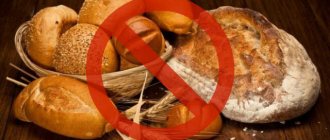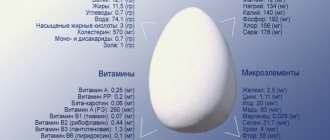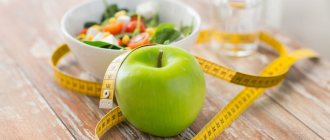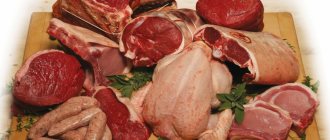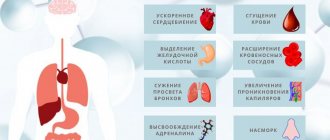Oxaluria is a fairly serious disease caused by high levels of calcium oxalate in the urine, which is released in the form of crystals. In medical practice, the primary stage of oxaluria and the secondary stage of oxaluria are divided. The primary stage is caused by a hereditary predisposition, and the secondary stage is caused by eating foods that contain large amounts of oxalic acid and its salt. Oxaluria promotes the formation of oxalate stones in the kidneys, which irritate the organ and cause severe pain and discomfort. In this article we will talk about the causes of the disease, treatment methods, and also analyze what diet is necessary for oxaluria.
General rules
The main task of a balanced nutritional system is to remove solid compounds of ammonium and calcium salts. In the process, weight is reduced, so the person’s quality of life improves. A diet for kidney stones has a positive effect if you adhere to the following recommendations:
- Drink plenty of fluids. The daily norm is 2.5 liters of water without gas. This helps reduce the concentration of salts in the urine.
- Switch to fractional meals to reduce the amount of food per meal. A serving should not weigh more than 300 g.
- Foods that contain a lot of carbohydrates are consumed for breakfast.
- You should not overeat to avoid metabolic disorders.
- Drink freshly squeezed juice 20-30 minutes before your meal.
- Use diuretic infusions and decoctions of radish seeds and leaves, chickpea flour or herbal infusions.
The diet for oxalate stones begins with reducing food intake. For the first 2 days, the patient eats 1 time per day. The rest of the time he drinks vegetable juices, which help dissolve the oxalates. Doctors warn that you should not eat more than 1500-2000 kcal per day.
Diet principles
The patient's diet, food intake during the day, the amount of food and its calorie content are adjusted.
Important! The point of the diet for oxalate kidney stones is to prevent the formation of new stones and slow down the growth of existing ones!
- 1 Daily oxalate intake in adult patients should not exceed 50-80 mg (food lists below).
- 2 It is better to eat food 5-6 times a day in small portions, avoiding overeating. It leads to the opposite effect (the excretion of salts in the urine increases).
- 3 Optimal drinking regimen in the absence of contraindications: 2-2.5 liters of water per day (50 ml/kg body weight), of which 1.5-2 liters should be clean drinking water. To alkalize urine, you can drink mineral water (Essentuki No. 4, No. 20, Borjomi). Drinking enough water is necessary to dilute urine and eliminate oxalates. The main volume of liquid should be taken in the daytime.
- 4 It is advisable to completely exclude marinades, canned food, smoked foods, salty, spicy, fried foods, alcoholic beverages, strong tea and natural coffee.
- 5 Fasting days are useful.
- 6 The oxalate diet should be followed for 3-4 weeks , then take a break for a month, during which you can adhere to table No. 7 according to Pevzner. In adult patients, the diet can be continuous.
On a note! Vegetable juices from the list of permitted, clean water contribute to a faster removal of oxalates from the body!
Indications
Calcium oxalates are present in any body, but their concentration indicates disturbances in the functioning of the kidneys. An oxalate diet is the main way to get rid of stones. They sit on it when the following symptoms appear:
- frequent urination;
- constant pain in the lower back, lateral abdominal area, groin;
- dark yellow or reddish urine;
- an increase in the number of leukocytes or protein in the urine;
- increased temperature due to inflammation in the kidneys;
- fatigue.
Mineral water removes stones from the ureter. The liquid containing fluorine, tungsten and silicon normalizes mineral metabolism and eliminates pain. Its use in combination with a balanced diet enhances the dissolution of oxalates.
Diet for oxalate stones
What to eat to dissolve oxalate kidney stones
It is impossible to dissolve mineral stones with products. But proper nutrition restores the pH of urine, which prevents further stone formation. Therefore, the diet includes products with the following important components:
- pyridoxine – rice flour, oregano, mint, corn, millet, flax seeds;
- retinol – carrots, chicken eggs, fish oil, baked zucchini, apricots, dried apricots;
- magnesium – pine nuts, hazelnuts, rice, pearl barley, sesame seeds, sunflower seeds.
Pyridoxine and magnesium accelerate the excretion of ethanedioic acid. Due to this, the risk of stone formation in the renal pelvis is reduced.
When following a diet, special attention is paid to folk remedies. To restore metabolism, you need to use decoctions of the following herbs:
- Linden;
- peppermint;
- elderberry inflorescences;
- violet roots;
- bearberry;
- Birch buds;
- nettle.
Every day, between main meals, drink 150-250 ml of decoction. For oxalate stones, diuretic herbs are no less effective - juniper, bird knotweed, horsetail.
Decoctions of diuretic action are used only in the absence of concomitant diseases - ureteral obstruction, renal failure, obstructive urethritis.
Authorized Products
Oxalic acid salts are present in many foods, so it is difficult to determine what can and cannot be eaten when illnesses appear. A proper diet for oxalate kidney stones includes foods high in B vitamins, which clear the crystals from the body.
Table of permitted products
The diet is aimed at eliminating foods high in oxalic acid from the diet. The menu for oxalate kidney stones includes foods with small amounts of ammonium and calcium salts - up to 50 mg per 100 g of food.
| Product group | Name |
| Vegetables | Cauliflower and white cabbage, eggplants, carrots, peeled cucumbers, zucchini, turnips, sweet tomatoes. |
| Fruits and berries | Apricots, bananas, watermelon, melon, quince, pomegranate, pears, cherries, grapes, peaches, sweet apples, dogwood, lingonberries, strawberries, pineapple, blackberries, viburnum, raspberries, pumpkin, plums, cherries, blueberries. |
| Fish | Baked or boiled low-fat varieties. |
| Meat | Low-fat types. |
| Products made from flour and cereals | Rye, gray and wheat bread from 2 types of flour, wheat and pearl barley, semolina, buckwheat, oatmeal, rice, pastry products, ground bran, vermicelli and pasta. |
| Dairy | Butter, yogurt, milk, cream, kefir, fermented baked milk, lightly salted cheeses, fermented milk drinks. |
| Nuts | Hazelnuts, walnuts and pine nuts. |
| Beverages | Dried fruit compotes, fruit drinks, jelly, birch sap and freshly squeezed juices from vegetables and fruits, infusions of mint, horsetail or dill, mineral water. |
During the period of exacerbation of urolithiasis, the consumption of milk products is limited. When preparing dishes, you are allowed to use cinnamon, vanillin, and bay leaf.

Allowed foods for kidney stones
Causes of manifestation
The presence of any stones in the kidneys is indicated by the presence of oxalic acid salts detected in the patient’s urine test, which is called oxalaturia. The disease can occur in the body as a genetic disease (oxalosis), which is caused by an imbalance in the metabolic process. But oxalaturia also occurs as a result of an unbalanced diet (the desire to lose weight, for example), and as a result of a number of chronic diseases.
After detecting signs of kidney stones in urine tests, the next stage of diagnosis will be an x-ray, which will help the doctor make a final diagnosis.
As you can see in the pictures, oxalate stones have spikes in their shape. Therefore, passing through the ureter, they bring suffering to the patient, cutting and acute pain, as they injure its walls. This explains the presence of blood in the urine and the brown color of the stones themselves.
Oxalate stones have a structure that is difficult to dissolve, especially large formations. They can only be removed by specialists during surgery. Small formations undergo dissolution. A balanced diet plays an important role in this process.
I would like to say a little about oxalaturia. This is the so-called oxalic acid diathesis, which portends urolithiasis. A diet for oxalaturia does not require the strict consumption of only vegetable and dairy products. The main thing is to exclude oxalic acid products and reduce the consumption of carbohydrates and salt (saturated broths, fried meats and fish). It is necessary to monitor pH values in urine tests. The indicator will be optimal within 5.5-6.5. With oxalaturia, there are no special conditions for the cooking process, but it is better not to fry in oil, but to steam or boil.
Fully or partially limited products
A large amount of oxalic acid is typical for products of plant origin, therefore, in case of oxalate kidney stones, greens, vegetables and fruits with a salt content of more than 0.3 g per 1 kg of product are prohibited.
Table of prohibited products
The table lists foods that are characterized by high and moderate levels of oxalic acid.
| Category | Name |
| Vegetables | Onions, broccoli, Brussels sprouts, red cabbage, green leafy vegetables, rutabaga, olives, corn, beets, turnips, tomatoes, peas, celery, beans, sweet potatoes, radishes, peppers, chickpeas. |
| Fruits and berries | Citrus fruits, kiwi, figs, all types of currants, persimmons, gooseberries, strawberries, mango, coconut, wine berries. |
| By-products | Liver, brains, kidneys, tongue. |
| Meat and fish | Canned food, pate, caviar, smoked meats, boiled milk sausages. |
| Greenery | Parsley, spinach, sorrel, lettuce, rhubarb, nettle, rosemary, sage. |
| Nuts and seeds | Peanuts, cashews, sesame seeds, poppy seeds, pecans, chia and sunflower seeds, flax seeds, almonds, soybeans, pistachios. |
The menu for the week does not include sweets and meat broths. Products containing gelatin are prohibited, since the glycol in its composition activates the production of oxalic acid.
There are foods that are included in the daily diet in limited quantities. Partial restrictions apply to the following products:
- salt - about 2 g per day;
- sugar and honey - 1 tbsp. l. in a day;
- eggs - 1 yolk;
- cottage cheese - 400 g;
- lard - up to 30 g;
- vegetable and butter - 60 g.
In this diet, meat and fish are considered interchangeable, so they alternate in the menu. You should not consume more than 150-200 g of the product once every 2 days.
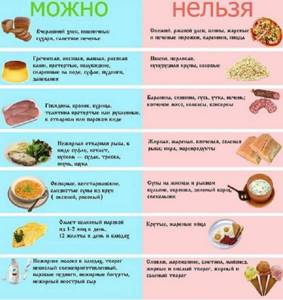
Nutrition for oxalate stones
Power Mode Menu
The daily diet consists of 70 g of protein, 80 g of fat and 350-400 g of carbohydrates. Be sure to drink about 2 liters of liquid. The energy value of a diet with oxalates in the kidneys does not exceed 2500-3000 kcal. An approximate diet for 7 days consists of the following dishes:
- Monday - for breakfast, prepare an egg or oatmeal, apple juice or green tea with a cracker. For second breakfast, cottage cheese with dried fruits is suitable. For lunch, eat lean soup or chicken fillet, a piece of whole grain bread, and compote. For dinner, fish meatballs or a steamed cutlet, fruit jelly are suitable. Before going to bed, a glass of kefir is enough.
- Tuesday - in the morning, buckwheat porridge with milk, vegetable salad and juice are recommended. Lunch consists of boiled fish, banana and dried fruit compote. For lunch they prepare nettle borscht, lean beef, rye bread and wash it down with compote. Dinner is pasta or potato casserole and steamed fish. After 2-3 hours, drink yogurt.
- Wednesday - breakfast includes carrot and apple salad with sour cream, fruit juice. The second time they have breakfast with a piece of cottage cheese casserole. For lunch they prepare sea fish with mashed potatoes or noodle soup. Wash down your meal with tea or cucumber juice. Dinner consists of vegetable cabbage rolls, bread and eggs. Drink a glass of yogurt before bed.
- Thursday - the day begins with rice porridge, cheese and weak tea. A salad with apples and banana, and yogurt are suitable as a snack. They have lunch with porridge and lean meat, washed down with compote. In the evening, eat oatmeal with steamed fish, and later drink kefir.
- Friday - have breakfast with rice with vegetables and a soft-boiled egg. Second breakfast includes sweet low-fat cottage cheese or fruit. Lunch consists of pearl barley soup, boiled turkey, carrot salad and apple compote. For dinner, a rice casserole and a decoction of dried fruits are suitable. 2 hours before bedtime, snack on nuts.
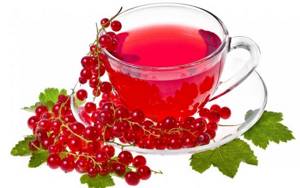
Diet for kidney stones
On Saturday and Sunday, dishes are chosen from those that were present in the diet during the week. If you strictly adhere to a diet with oxalates in the kidneys, the release of oxalic acid will decrease by 40%.
